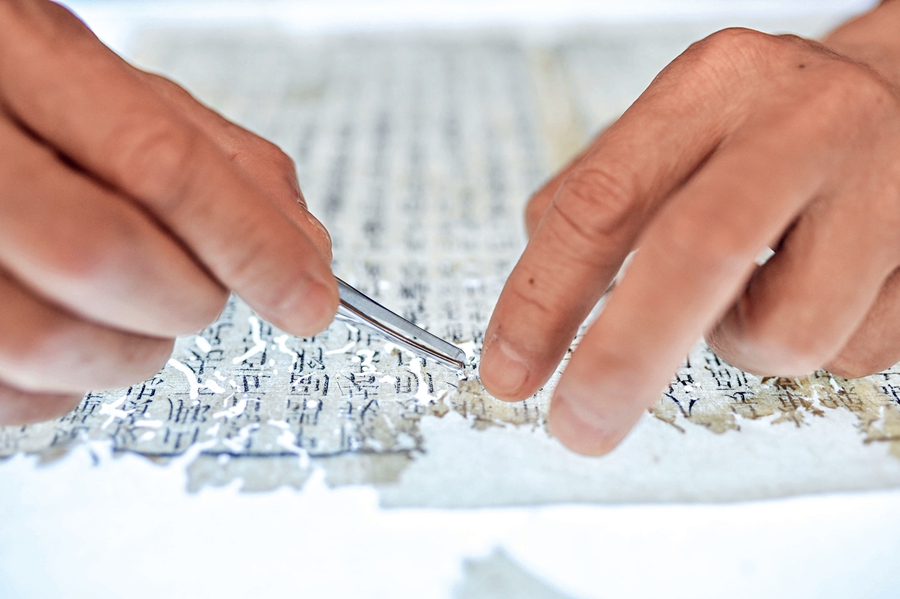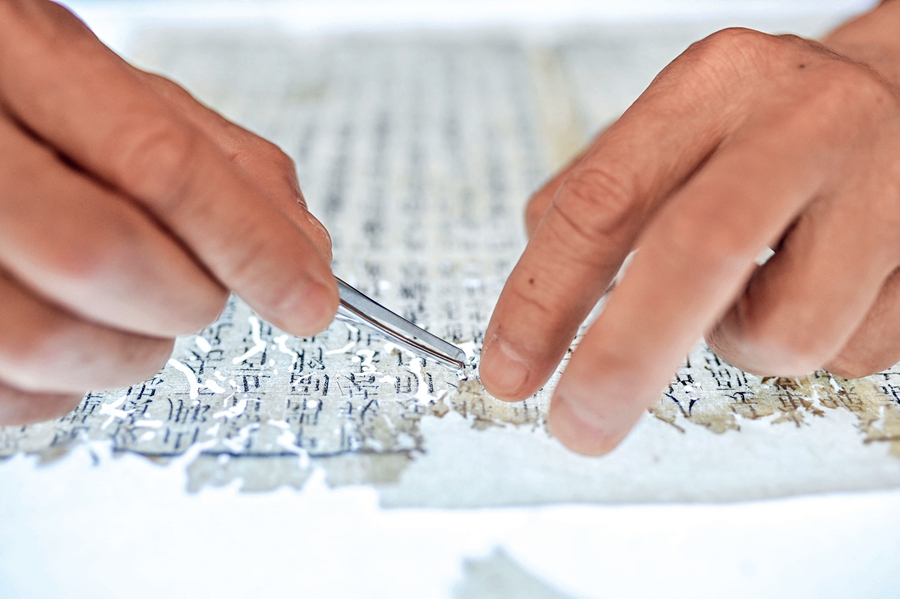Doctor of Ancient Books
China Today by Hu Yue,April 20, 2018 Adjust font size:
Du Weisheng, who is in charge of the National Library of China’s Ancient Books Restoration Group, is 65 years old, but still vigorous. With 40 years of experience, Du feels a bit like a doctor of ancient works, and his job is to treat their illnesses. Du plays a very important role since he is an inheritor of the national intangible cultural heritage in the restoration of ancient books. He participated in the restoration of the Dunhuang Manuscripts that had been particularly damaged, the Yongle Encyclopedia which was compiled by order of the Emperor Yongle of the Ming Dynasty (1368-1644), and historical documents of the Xixia regime (1038-1227).
“The ancients gave names to different parts of the books such as the mouth, the head and the root; most correspond to organs of the human body. They treated books as if they are living creatures.” For Du, the restoration of ancient books is of great importance because it allows the people to inherit the legacy of Chinese civilization.
From Novice to Expert
Before starting work in book restoration, Du was an army engineer for five years in Hunan Province; this experience ingrained in him military discipline. Upon his retirement from the army in 1974, he was assigned to the National Library of China to join the Ancient Books Restoration Group. As a green hand, he thought the work “in the office” easier, and it gave him the opportunity to read more.
Du Weisheng is using tweezers to restore a fragmented page.
But after a few days, he realized that restoring books was not an easy job. Being a novice, he began by learning the techniques from several experienced workers, who all had a lot of talent for book restoration and edition identification. Du still remembers being left-handed, his uncompromising teacher asked him to write with the other hand. After two years of study and practice, Du, who already had some experience, was confronted with his first assignment: a paper casket unearthed in Xinjiang in 1976. As the papers on the coffin were pages of ledgers from a Tang Dynasty (618-907) post office, Du and his colleagues had to take off the sheets and assemble the pages and link them together.
Time has passed quickly, and for 40 years, Du has continued his work. Today, he is an expert in this field in China. Since the early 2000s, he has participated in the development of standards for the restoration of old books. He is currently revising the standards for the profession.
Now that he has retired, he is no longer doing restoration work, but concentrating more on teaching. “Since taking over the Ancient Books Restoration Group, I have been reforming the teaching pattern. Earlier, every young person had a designated teacher. Now, new ones can learn from all teachers. According to Du, a novice needs six months to learn the core knowledge, but it takes more than five years to master the techniques.


